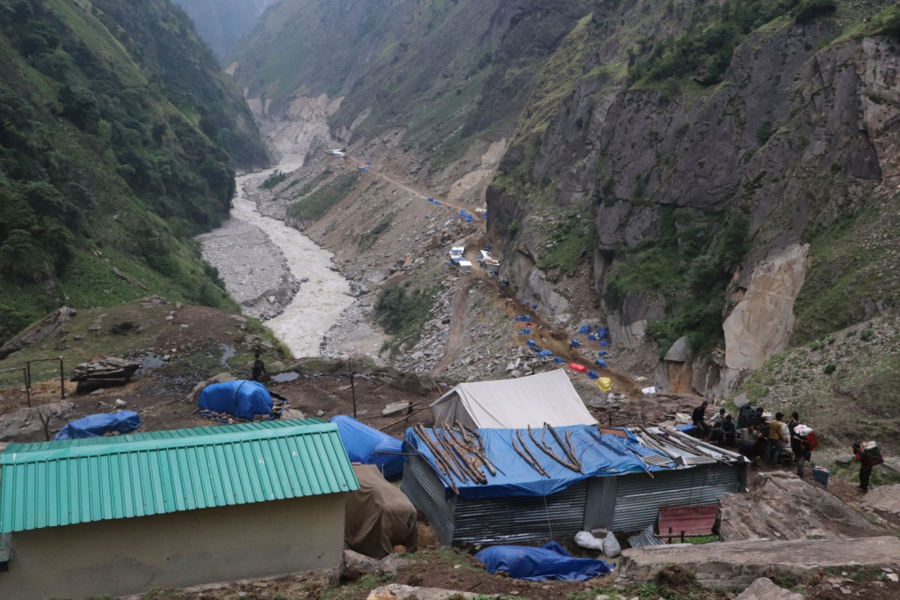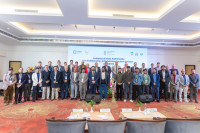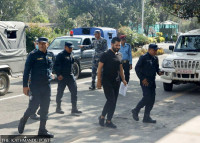National
Opinions sharply divided over holding census in Kalapani, Lipulekh and Limpiyadhura
Many say enumerators will be barred from entering the disputed areas by Indian forces.
Anil Giri
As the National Planning Commission and its Central Bureau of Statistics are all set to hold the 12th National Population and Housing Census from May 28 next year, a big question that the political and administrative leaderships are confronting is if it is possible to conduct the count in Kalapani, Lipulekh and Limpiyadhura, the areas that India claims too, and in what way.
The government is conducting the once-a-decade census employing more than 40,000 enumerators and 9,000 supervisors to carry out a nationwide door-to-door survey.
[Read: Even as Kathmandu protests Indian encroachment, Darchula depends on India]
Officials at the Planning Commission and the Statistics Bureau say since Kalapani, Lipulekh and Limpiyadhura belong to the Nepali territory, they are planning to conduct census in the areas that India is currently occupying.
Lawmakers and former director generals of the Department of Survey, however, say it is impossible to conduct a survey because India will not allow Nepali enumerators to enter the “disputed” land.
After a boundary dispute emerged with India last November, Nepal introduced a new political and administrative map on May 20 this year, incorporating Kalapani, Lipulekh and Limpiyadhura within its territory. The constitution was amended too to give the new map a legal status.
“Definitely, we will hold the census in Kalapani, Lipulekh and Limpiyadhura. We are discussing how to conduct the census going door to door,” Planning Commission member Min Bahadur Shai told the Post. Officials are also discussing the options in case a door-to-door count is not possible.
Administrators are for holding a headcount in Kunji, Navi and Kuti, the three villages that used to be parts of Vyas Village Development Committee earlier.
Nepal conducted the last census in Lipulekh six decades ago. Chief District Officers of Darchula had dispatched reports to the Home Ministry about the activities in these villages until around 1990.
According to Buddhi Narayan Shrestha, former Director General at Department of Survey, during the census in 1991, Nepali side did an informal survey in these three villages- Kunji, Navi and Kuti—and recorded the numbers of households and population. According to Shrestha, during the 1991 census, there were altogether a recorded number of 150 houses and 723 populations.
But this time I see it very difficult to hold a census in these three villages, said Shrestha. In 1991 also, Indian security forces had barred the Nepali enumerators to enter in the Kalapani area.
“I do not think our enumerators could reach these three villages because Indian security forces will not allow them to enter Kalapani which is heavily fortified and militarised. Since we have established a border outpost in the Charung area in Darchula, the Indian side seems unhappy, so I do not see any possibility to conduct census physically in that area,” said Shrestha.
The government has recently set up a border outpost in Charung area in Darchula in order to monitor security in the area where Nepal Army is also constructing a road up to Humla.
According to one security report, India has added more troops and logistic in Kalapani and Lipulekh areas, not only due to the publication of the new map by Nepal but also keeping the view of possible increase of Chinese movement in Lipulekh area after Indian and Chinese troops clashed in several parts of Galwan Valley and Ladakh area recently.
Indian authorities have been providing free education to the children of people living in these three villages and banking service as well as ration cards to the citizens of these three villages. In Kunji, State Bank of India has opened its branch and has been providing services to the villagers of these villages, according to the report.
How can we conduct the census, Ganesh Thagunna, Member of Parliament from Darchula district, said. “It is impossible to conduct the census in present condition because ground reality and situation is totally different from what people from Kathmandu say and perceive.”
“The security situation is more complex than what it was one year back. It is impossible to enter inside these three villages. If government officials are basing their view from the district headquarters, then I have nothing to say. The fact is that the entire chunk of land is far from our reach and under the contorl of the Indian army.,” added Thagunna.
According to him, an estimated 3,000 citizens live in three villages which have been under the Indian surveillance and control for decades.
“Our administrative presence in that area has been cut off since 2018 BS, so we need to do much more to make the people in those villages realise that they are Nepali nationals,”said Thagunna.
Though the concerned government agencies are gearing up to hold a census in the Kalapani area, they have not reached out to the Ministry of Foreign Affairs to seek its positions and opinions, a senior foreign ministry official said.
According to a Nepali official who has been closely following the issue and studying the Indian position on the boundary dispute, one needs to get approval from India’s defence ministry to enter that area.
“Even the Indian defence ministry does not sanction the approval from the Ministry of External Affairs of India,” the official said “How can we hold the census in such a condition?”
The CBS has already prepared and published the questionnaire for its proposed door-to-door campaign.
“Though conducting census in these areas is a sensitive matter, we are planning to hold the census anyway,” Nabinlal Shestha, director General at CBS, told the Post. “We are planning to hold a census in those areas because they fall under our territory. Those lands which we have recently incorporated in our map fall in Vyas Rural Municipality. Once we complete the process, we will reach a conclusion.”




 19.12°C Kathmandu
19.12°C Kathmandu















